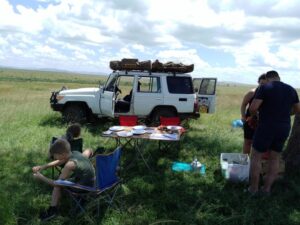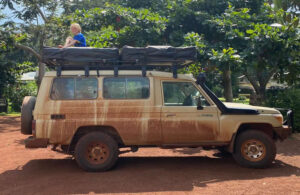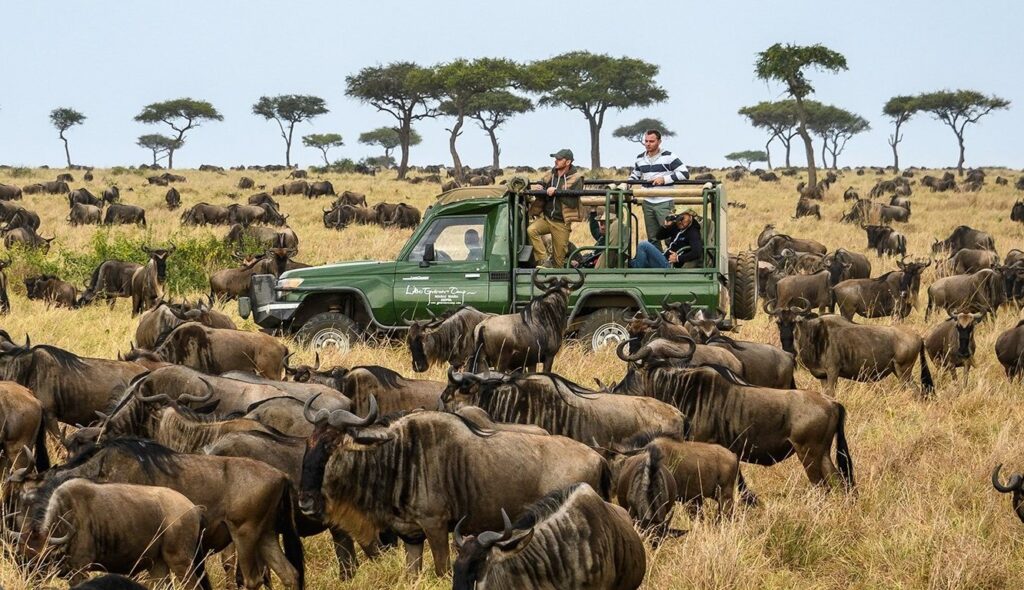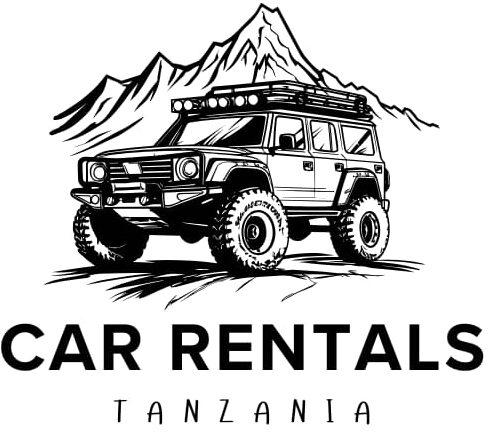Serengeti National Park Self-Driving Safari
Does a Self-Driving Safari in Serengeti National Park Actually Pay Off? Is it even possible? Although it requires preparation, knowledge, and a larger budget, a self-driving safari in the Serengeti National Park is certainly doable and will surely be an unforgettable experience. A self-drive safari through the Serengeti is an enticing prospect. Take your driving skills to the next level with this one-of-a-kind adventure. On top of that, you get to explore the limitless plain of Serengeti at your own pace, learning about the plants and animals that inhabit it.
The Serengeti is perhaps the most gratifying safari park on the continent because of its abundance of breathtaking attractions, like the big wildebeest migration, and its variety of activities, like game drives, walking safaris, and hot air balloon safaris. However, you will get the most out of the park if you prepare ahead of time. Tour guides in Tanzania often complain about the terrible driving conditions on the main routes that go from the Naabi Hill entrance to Seronera, the epicentre of the action, and then outwards to the east and west from Seronera. With its rocky landscape and ribbons that resemble washboards, it is a challenging path. It is advised that drivers keep to a speed limit of 25 km/h or face the possibility of losing control and rolling their own vehicle.
Ndutu and Seronera, two regions in the southern Serengeti plains, are the most accessible from Arusha. Although the western corridor and Lobo are worth exploring, they are somewhat distant. To visit the Serengeti’s lesser-known regions, it’s best to rent a safari car and a driver-guide.
The logistics of planning a self-driving safari in the Serengeti
While planning a road vacation in other parts of the world is as easy as leasing a car, deciding on a route, and hitting the road, visiting the Serengeti by yourself is far more complicated than you might think. Remember first and foremost that there will be a significant spike in pricing. Autonomous vehicles incur far higher permit expenses compared to tour operators. Also, keep in mind that you’ll need to drive 300–400 km daily to fully experience the Serengeti.

Accommodation in Serengeti for your self- drive safari tour
When you’re on the road, you can choose from a wide variety of hotels. You have the freedom to choose as you go whether to stay at a lodge for a night of self-indulgence or at one of the many free campgrounds.
The budget is also greatly inflated by the cost of overnight accommodations, which is unfortunate. Permits and fees will eat up much of your Serengeti budget, whether you’re camping at a public site (50 USD/night/person), a private camp (50 USD/night/person), or a lodge (60 USD/night/person). Serengeti lodges may already have incorporated the fee in their total pricing. But if you’re on a tight budget, a night at a lodge will set you back $200.
Camping out on your own is the most economical way to view the Serengeti. Even so, you’ll still need to stock up on food and rent camping gear. Many tour operators or even your vehicle rental agency may rent you camping gear at a fair price.
Other activities inside the Serengeti national park
Walking safaris in Serengeti National Park are a great option for anyone seeking a more unique safari experience. The Serengeti National Park visitor center is the place to go if you want to book a safari walk; the price per person varies from $20 to $25 USD, depending on the length of the tour. The resort can also set up balloon rides and game drives if you ask ahead of time.
The Serengeti is an easy park to explore on a self-drive safari through Tanzania. Nearly every turn has a signpost, and the roads are usually in good condition. We recommend that self-drivers stay close to the park’s center for better wildlife viewing, but you’re free to go wherever you choose within the park. You can also benefit greatly from having an offline map on hand for swiftly finding your location.
What else to keep in mind during your Serengeti self-drive safari tour?
If you’re starting your journey in Arusha city, get ready for a wild ride. Ensure that you stock up on food to last you the whole duration of your park visit, bring 5 to 10 liters of water per person daily, plot out your route to capture the views you desire to see, and make an effort to secure all necessary permissions ahead of time.
Obtain an entrance quote for the Ngorongoro Conservation Area before you go to the gate to pay for the park entrance. Their Arusha office is the place to go for this. At the Serengeti National Park entrance, you can use a Visa or MasterCard to pay.
It is a long and tiring drive from Arusha to the Serengeti. Google Maps’ estimated journey times are completely inaccurate, and the roads are in a less than perfect state. Relax and try to soak in the sights as you make your way there. The durations of the journeys from Arusha to the Serengeti are as follows.
- Arusha to Karatu– 140 km in about 3 hours.
- Loduare gate to Ngorongoro crater entrance – about 15 km in about 45 min.
- Ngorongoro Crater to Naabi Hill Gate (Serengeti entrance) – 85 km in 2-3 hours.
- Naabi Hill gate to Seronera (central Serengeti – location of most camps) – 60 km in approximately one hour.
- Seronera to Lobo Ranger Post – 75 km in about 2 hours.
- Returning from Seronera to Arusha can take anything between 6 and 8 hours.
BASIC ETIQUETTE TO KNOW DURING YOUR SELF-DRIVING SAFARI IN THE SERENGETI NATIONAL PARK
- Keep on the road; going off-road may get you fined hundreds of dollars.
- Maintain the designated speed limit for national parks, despite the fact that most guides could care less. The majority of Serengeti accidents (90%) are caused by drivers going too fast.
- Do not go after the animals. They take exception to it, and park rangers can levy hefty fines of up to $1,000 for violators.
- Please remember to pull over to the side of the road, switch off your engine, and make room for other drivers to pull over so everyone may enjoy the wildlife viewing experience.
- Get out of your car as much as possible. The Serengeti is home to numerous dangerous predators, including lions, cheetahs, leopards, and many more.
- It goes without saying, even though it should. Keep any rubbish away from the road at all times. Changing the park’s biodiversity is as simple as dropping banana peels into the bushes.
- It is forbidden to drive in the Serengeti at night. Please refrain from driving between 6 a.m. and 6 p.m. alone.
Self-driving safari in the Serengeti national park. Is it worth it?
Taking a self-drive safari to the Serengeti isn’t about saving money. When compared to self-drive tours, booked private tours can save you up to 100% of the money. Not to mention exhausting and lengthy commutes Determine ahead of time which part of the trip will be driven by you and your travel buddy. This is just another perk of using a trip operator. Remember that tour leaders are often chatting with each other, which increases your chances of seeing those elusive cheetahs, leopards, and lions.

Lastly, a great deal of change can occur overnight. If you’re dealing with an automobile problem, an unpleasant animal encounter, or a flat tire, it’s better to have an experienced advisor by your side.
But nothing beats the sensation of taking control of your own vehicle. You get to choose the level of privacy you desire and have greater agency over your journey. If you want to extend your stay in the Serengeti or see another part of the nation at a later time, or if you decide on the fly, a self-drive is the way to go. Additionally, if you intend to drive across East Africa, it is an excellent piece of preparation.
You can find tremendous fulfillment in any experience, depending on your priorities. If you’ve never driven in difficult conditions before and this is your first safari, self-driving through the Serengeti might be an expensive and disappointing experience. However, this might be the perfect trip for you if you’ve been to the Serengeti previously, are interested in returning, and are looking for a new type of adventure.
In conclusion, after you’ve had your fill of the Serengeti, you can expand your self-drive safari itinerary to include the following parks: Arusha, home to Tanzania’s second-largest mountain, Kilimanjaro, Tarangire, the Ngorongoro conservation area, Lake Manyara, the home of tree climbing lions, and the Serengeti itself. Reason being, if you’re looking to add a little bit extra to your safari experience, you should definitely check out these adjacent attractions to the Serengeti National Park.


